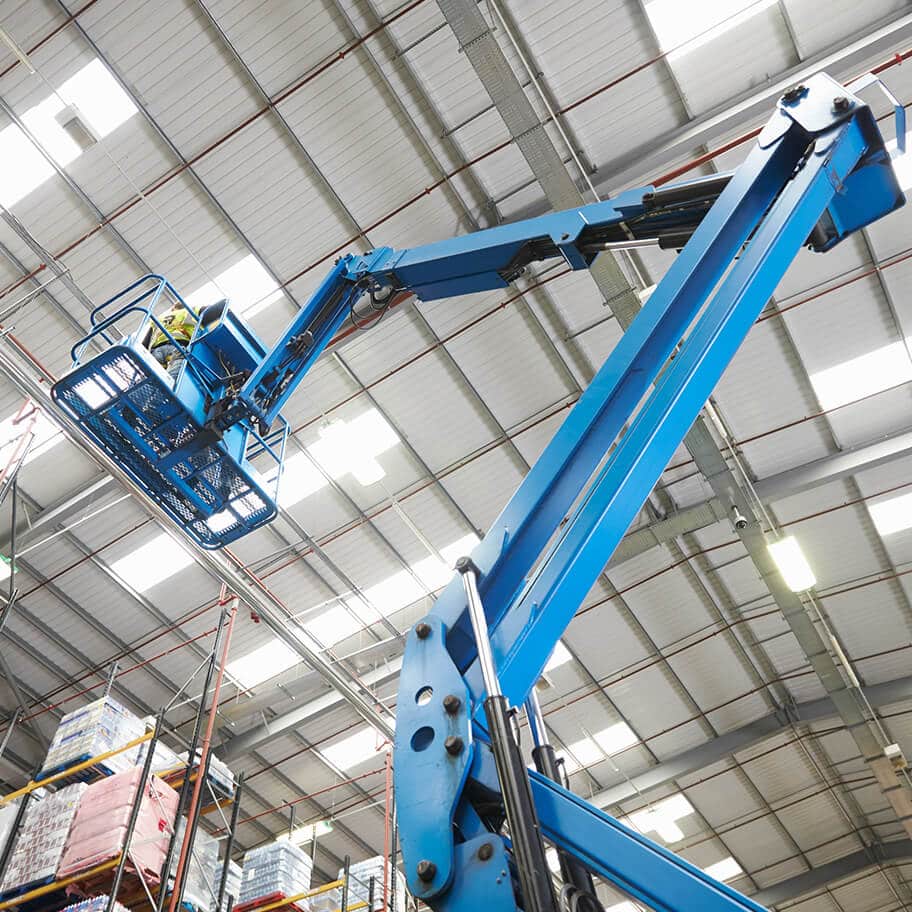Types of Accidents
Many accidents happen while the person operating the machine is elevated hence why falling from a height is one of the most common cherry picker accidents. It is not just employees that can be involved in these accidents but also members of the public who may sustain an injury while passing by.
Employers Liability
All employers have a duty of care to ensure the health and safety of employees while at work. A breach of this responsibility could result in workplace accidents and injuries. Employers may be found liable if it is found that there was a breach of their duty of care. It is important that all health and safety regulations are followed by both employers and employees so that the chances of workplace injuries are reduced. Under the Safety, Health and Welfare at Work Act, 2005 employers have certain duties which allow for the safety of all employees and visitors to the workplace. These duties include;
- Manage activities in a way which prioritises health and safety
- Provide employees with adequate training and personal protective equipment
- Put safety measures in place to help prevent accidents
- Ensure that the working environment is practical that the work that is to be carried out
Employees also have a duty of care to both themselves and their co-workers to ensure that they do not act in a negligent manner which may lead to injury. If it is found that they were acting in a negligent manner they may be found liable.
Safety, Health and Welfare at Work (Work at Height) Regulations 2006
These regulations are in place to ensure the safety of those who are required to work at a height. These regulations state that working at a height should be avoided if possible. If it is necessary for this work to be carried out employers have a duty of care to ensure that the work is done in a safe way using the correct equipment and tools. If a cheery picker is to be used all those who will be using the machinery should be trained on how to use it in a safe manner. This also ensures that the correct procedures are followed in the case of an emergency. Employers should also ensure that there are safety measures in place to ensure that there are no injuries sustained by members of the public.
Safety regulations should be followed by all in the company to ensure that nobody sustains injuries that could have been avoided.
Common Injuries
Some of the common injuries sustained from a cherry picker accident include:
Causes of Cherry Picker Accidents
Inadequate Training
There is a certain risk associated with working from a height so it is important that employees are properly trained on how to correctly use equipment and machinery. Inadequate training can lead to accident and injury of both employees and members of the public. Insufficient training is a common cause of workplace accidents so it is important that employees attend any training that is provided to them prior to completing a job.
Negligent Behaviour of Employee
If an employee is acting negligently during the course of their work it is likely that an accident will occur. The chance of an accident occurring is greater if the cherry picker is not used for the purpose intended. If you have been injured while using a cherry picker and it has been found that you were acting in an unsafe manner, it is likely that you will be found liable. Another example of this is if the cherry picker is hit by another vehicle operated by another employee.
Faulty Equipment
It is the responsibility of an employer to ensure that all equipment and machinery used in the workplace is maintained to a high standard to ensure the safe use and health and safety of employees. A poorly maintained cherry picker could result in an accident which the employer may be found liable for.
Objects Falling From a Height
As those using a cherry picker will be up at more of a height than others it is likely that items may fall from the cherry picker injuring other employees or members of the public. It is important that precautions are in place to reduce the risk of items falling if they are not secured properly.
Overturning
If a cherry picker was to overturn, it can not only affect the person operating it but also people that are working close by.
What to do after an accident at work*?
Following an accident at work, there are a number of steps you should follow:
-
Seek medical attention
Your health is your wealth and should be your first priority. Immediately after an accident at work, take a second to assess yourself to determine if you have any injuries and seek the relevant medical attention. If you have sustained a serious injury ensure that you contact an ambulance to attend the scene.
For minor injuries, you must remember that minor injuries where you ‘feel fine’ could progress to more serious injuries in the future. In this case it is always better to be safe than sorry and advisable that you go to your nearest accident and emergency (A&E) or local GP to be checked out.
-
Report the accident
It is critical to report the accident to your superior, i.e. a supervisor or manager on site. It doesn’t matter how small you think the accident may be. By law, accidents at work are required to be reported if the person is injured and can’t perform their daily work tasks for more than three days. Make sure to fill out an Accident Report Form. This can be used for reference in any medical examination and will also prevent any similar accidents from happening in the future.
-
Identify any witnesses
If possible, try to collect the contact details of anybody that witnessed your accident. This may be of use if you do decide to pursue a workplace accident claim. It is also useful to find out if there is any CCTV in the area where your accident happened.
-
Document the incident
It is important that you collect all the relevant information in connection with your accident:
- How the accident happened
- Details of any witnesses
- If there are any CCTV recordings of your accident
- Take pictures of where the accident happened and what caused your accident
-
Speak to a workplace accident solicitor
If you are considering moving forward with a workplace accident claim for any personal injuries sustained, it is advisable that you speak with a workplace accident claims solicitor as soon as possible. If you are proceeding with a claim, the first step will be submitting your claim to the Personal Injuries Assessment Board (PIAB) for assessment. A workplace accident solicitor can help you in preparing your application to the Personal Injuries Assessment Board (PIAB) and ensure that you follow the process in the correct format, meaning that you can move forward with your claim quickly without unnecessary delays.
It is important to remember to keep copies of any expenses that you have incurred as a result of the accident. It is also imperative to retain copies of medical reports or incident report forms where possible as you will need them when making a claim.

